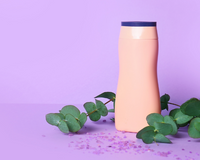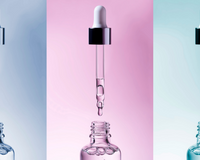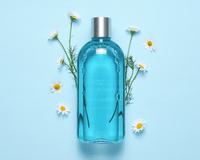Madam CJ Walker hair care products as known as Sarah Breedlove was born in a cotton field in Louisiana in 1867, soon before the American Civil War ended, where her parents toiled as slaves. His parents had recently been freed from slavery when he was born. Sarah, the family's fifth child, is also the family's first freeborn. Sarah moved home with her elder sister and brother-in-law after the death of her parents when she was seven years old. The three of them go to Mississippi in 1877, where they work as cotton pickers. She married for the first time at the age of 14 to escape her uncle's pressure and cruelty. Leila, a daughter, is born from this union.
This is the most significant contribution by a single person to the institution. Sarah travels to the White House with Harlem luminaries to petition the White House in July 1917, after a white gang leader murders more than 30 black people in Illinois. To market his wares, he travels on a year-and-a-half tour of primarily African-American southern and southeastern states. He goes door to door, advertising and attempting to sell his items. Sarah moved to Pittsburgh in 1908 and opened Lelia, a hairdressing and hair care school. Sarah relocated to Indianapolis, America's manufacturing paradise, in 1910, and opened the "Madame C. J. Walker Manufacturing Company," a haircare business, hairdresser, and manicure salon.
History Of Madam CJ Walker Hair Care Products
She, like many African-Americans, suffered from a scalp ailment in the 1890s. This illness causes dandruff and hair loss in the majority of people. He enlists the assistance of his barber brothers; he creates a number of items at home and tests them on himself. Sarah travels to Denver in 1905 to work as a sales representative for a black businesswoman woman called Annie Malone after sampling her wares. Sarah married her third husband, journalist Charles Joseph Walker, in 1905 after divorcing her second husband in 1903. She changed her name to Madame C. J. Walker.
Sarah, who has always valued education, establishes a vocational school in this town to train workers for manufacturing and agricultural jobs. Sarah, which often recruits women in high positions, hires thousands of women as sales representatives, and the company claimed in 1917 that it had trained a total of 20,000 women. She also instructs many black women on how to budget and create companies.
Sarah traveled to Central America and the Caribbean to expand her company in 1913, and when she returned, she resided at her daughter's mansion in Harlem, New York. Walker ladies, who also own hair shops in this town, have become well-known. In 1916, he handed over his factory's operations to his professors, Ransom and Alice Kelly, and returned to his New York office to continue his company. Sarah is active in Harlem's social and political life, and she is involved in a number of initiatives promoting black people's rights. She donates $5,000 to the NAACP (National Association for the Advancement of Colored People), which started the anti-lynching crusade.
Madam CJ Walker Hair Care Products
Walker was residing in Saint Louis when she decided to do something about her hair loss. Her brothers worked as barbers in the city, so she could rely on them for advice on hair maintenance. They weren't specialists on women's hair and scalp problems, so she tried some home treatments as well. She also drew on her expertise as a washerwoman and her knowledge of the characteristics of cleansers such as lye soap. Walker had access to a variety of products, albeit few were specialized in the curls and texture of Black women's hair at the time.
But Annie Turnbo's Poro hair care line was unique. Turnbo was a Black lady who had arrived in Saint Louis in preparation for the 1904 World's Fair, where she planned to sell her hair care goods and procedures. Walker began using Turnbo's products, such as the Great Wonderful Hair Grower, in 1903. Walker's hair issues reportedly improved as a result of this treatment, and she went on to become a Poro sales representative. Walker ultimately launched her own product line. Walker moved to Denver in 1905 to promote Poro goods while continuing to develop her own hair care products. She worked as a chef for pharmacist Edmund L. Scholtz, who may have assisted her in understanding the chemistry of such substances.
Why Were Madam CJ Walker Hair Care Products So Popular?
In 1906, Walker left Turnbo and founded the Madam C. J. Walker Manufacturing Company, which began marketing Madam C. J. Walker's Wonderful Hair Grower. Precipitated sulfur, copper sulfate, beeswax, petrolatum, coconut oil, and a violet extract perfume to mask the sulfurous odor were among the ingredients. "God answered my request," Walker once said, "because one night I had a dream, and in that dream, a large Black guy appeared to me and instructed me what to mix up for my hair." Some of the cure was grown in Africa, but I ordered it, blended it, and applied it to my scalp, and my hair began to regrow quicker than it had ever done before.
Her goal was for her goods to help Black women, not to alter them. Walker's first products were Glossine (a pressing oil) and a vegetable shampoo, in addition to her hair grower. She advised them to shower more frequently and to use her "Walker System," which includes the use of a hair grower, oil, and heated combs to promote healthier hair. Walker's objective was not to change the look of Black women's hair, even though she promoted hot combs that straightened hair. Walker once remarked, "Let me clarify the erroneous notion held by some that I claim to straighten hair."
"This combination of petrolatum and sulfur has been around for a hundred years, according to medical publications. This dish was not invented by any of these women". "I despise such an impression since I've always presented myself as a hairdresser. I'm a hair grower." Walker's product line expanded to include lotions and soaps, but she remained committed to improving the condition of her customers' hair and empowering women to feel good about themselves and their looks.









